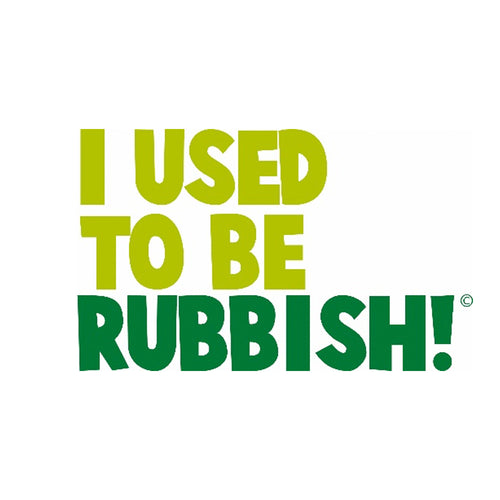Security and Checkout
I Used To Be Rubbish use industry leading encryption technology to ensure the security of your information.
All communication between your browser and our server will be safe from eavesdroppers in the secure areas of our site.
Payment Options
I Used To Be Rubbish offer Paypal checkout.
Paypal allows you to pay with either your Paypal account or with your credit card. The PayPal site is highly secure. Paypal use industry-leading technology (such as SSL) to keep your information safe. PayPal automatically encrypts your confidential information in transit from your computer to ours using the Secure Sockets Layer protocol (SSL) with an encryption key length of 128-bits (the highest level commercially available). Before you even register or log in to the PayPal site, our server checks that you’re using an approved browser – one that uses SSL 3.0 or higher.
Once your information reaches the PayPal site, it resides on a server that is heavily guarded both physically and electronically. PayPal servers sit behind an electronic firewall and are not directly connected to the Internet, so your private information is available only to authorised computers.
How can I check that my connection is secure?
You should only ever carry out confidential transactions over secure internet connections. Secure connections make it difficult for others to intercept your personal details. But how can you tell if you have a secure website connection?
Look for the padlock
When you enter login, registration and payment screens you will be in a ‘secure session’. Depending on the browser you have chosen, a padlock will display in either the address bar or at the bottom of the browser window. It means that your personal information will be coded before it leaves your computer.
Check I Used To Be Rubbish web address
The first few characters of the web address in your address bar will change from the usual http to https – the ‘s’ stands for secure.
Further Information – How to decide if you can trust a website
Knowing when to trust a website depends in part on who publishes the website, what information they want, and what you want from the site. If you’re not sure whether to trust a website, consider these questions:
-
Is the website owned by a company or organization that you know well?
-
Does the website ask you for personal information?
-
On a retail website, is there a way to contact someone by phone or mail?
-
If you don’t recognize the site, do you have other information to help you decide?
Is the website owned by a company or organization that you know well?
For example, if you bought merchandise from a physical store and were happy with the experience, you might want to try the store’s website as well. However, even if you trust the company, always read the website’s privacy or terms of use statement. Sometimes a company’s website is independent of its stores, and it might have different privacy terms. Look for terms you don’t agree with, such as requirements to accept e-mail offers or advertising from the website, or that your information is shared with the company’s partners. If you are not comfortable with the terms or behaviours (for example, you do not want to be tracked or to see advertisements), do not use the site.
Does the website ask you for personal information?
If you are asked for personal information, such as credit card numbers or bank information, only provide it if there is a good reason to do so. Also, make sure there is a secure entry form for recording information. Look for a message stating that the information will be encrypted and check for the lock icon in the Security Status bar in the Internet Explorer Address bar (do not enter confidential information if there is no lock icon on the Address bar). Also, try to find out what the website’s policy is about storing information: Do they keep your credit card number on file? Do they have partners that they share information with? You should be confident that the site is using your information properly and in a secure manner before providing any information.
On a retail website, is there a way to contact someone by phone or mail?
Do they have a phone number that you can call if you have a problem, or that you can use to place an order? Does the website list a street address? Is there a posted return policy with acceptable terms? If the site doesn’t provide a phone number or physical address, try contacting the company by e-mail to ask for that information.
If you don’t recognise the site, do you have other information to help you decide?
If you are not familiar with a website that might not necessarily mean that you cannot trust it. Ask reliable friends or colleagues about the site. Search for references to the site on the Internet to see if a source, such as a magazine or company that you do trust, has referred to it. Read the website’s privacy statements or other disclosures.
A website might not be trustworthy if:
- The site is referred to you through an e-mail message from someone you don’t know.
- The site offers objectionable content, such as illegal materials.
- The site makes offers that seem too good to be true, indicating a possible scam or the sale of illegal or stolen products.
- You are lured to the site by a bait and switch scheme, in which the product or service is not what you were expecting.
- You are asked for a credit card as a verification of identity or for personal information that does not seem necessary.
- You are asked to provide a credit card number without proof that the transaction is secure.
